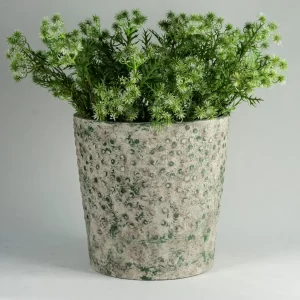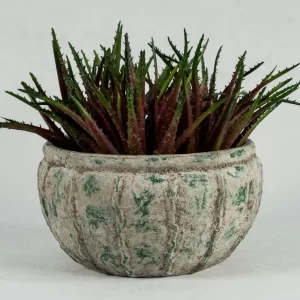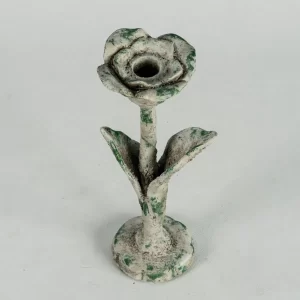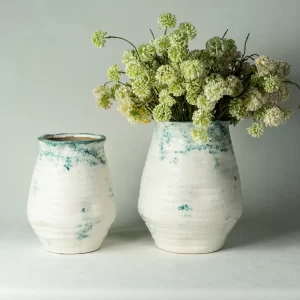Terracotta flower pots have a natural and simple beauty, and can automatically adjust the soil moisture, which is loved by gardening enthusiasts. However, after using them for a long time, a lot of dust, mineral residues, mold and algae will accumulate on the surface of the flower pots. Therefore, these flower pots must be cleaned regularly, which can not only make the flower pots look better, but also make the plants grow healthier, and ensure that the flower pots drain smoothly to prevent the spread of diseases.
As a manufacturer providing wholesale flower pots and planters,We will introduce you to a simple and effective method to clean terracotta flower pots.
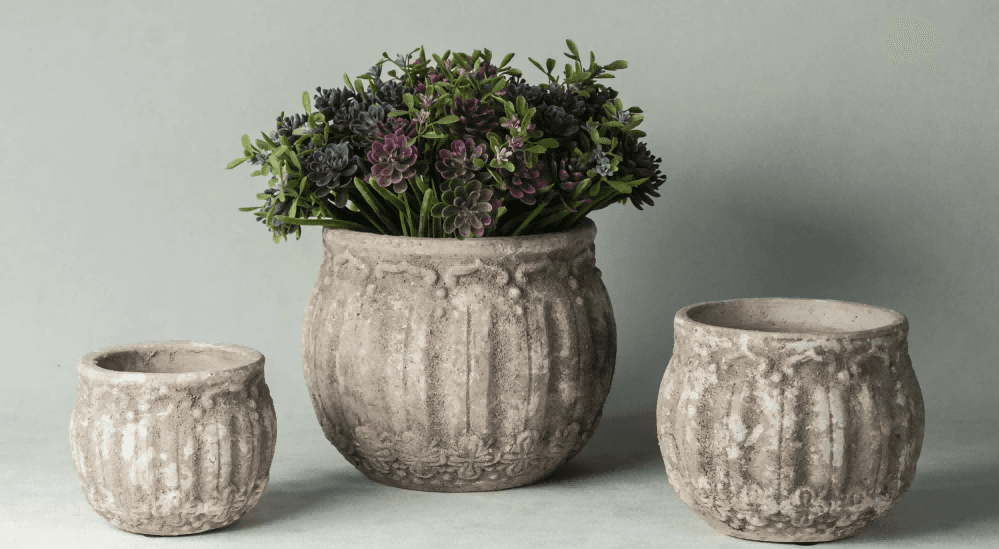
Why Should You Clean Your Terracotta Pots?
Before we get started, let’s understand why cleaning your terracotta pots is so important:
Prevent the spread of disease
Old soil can harbor harmful bacteria, fungi, or pests that can affect new plants.
Remove mineral deposits
Terracotta pots often develop white mineral stains from evaporating water, which can affect their appearance.
Promote healthy root growth
Clean pots help improve drainage, ensuring that plant roots are exposed to fresh soil and water.
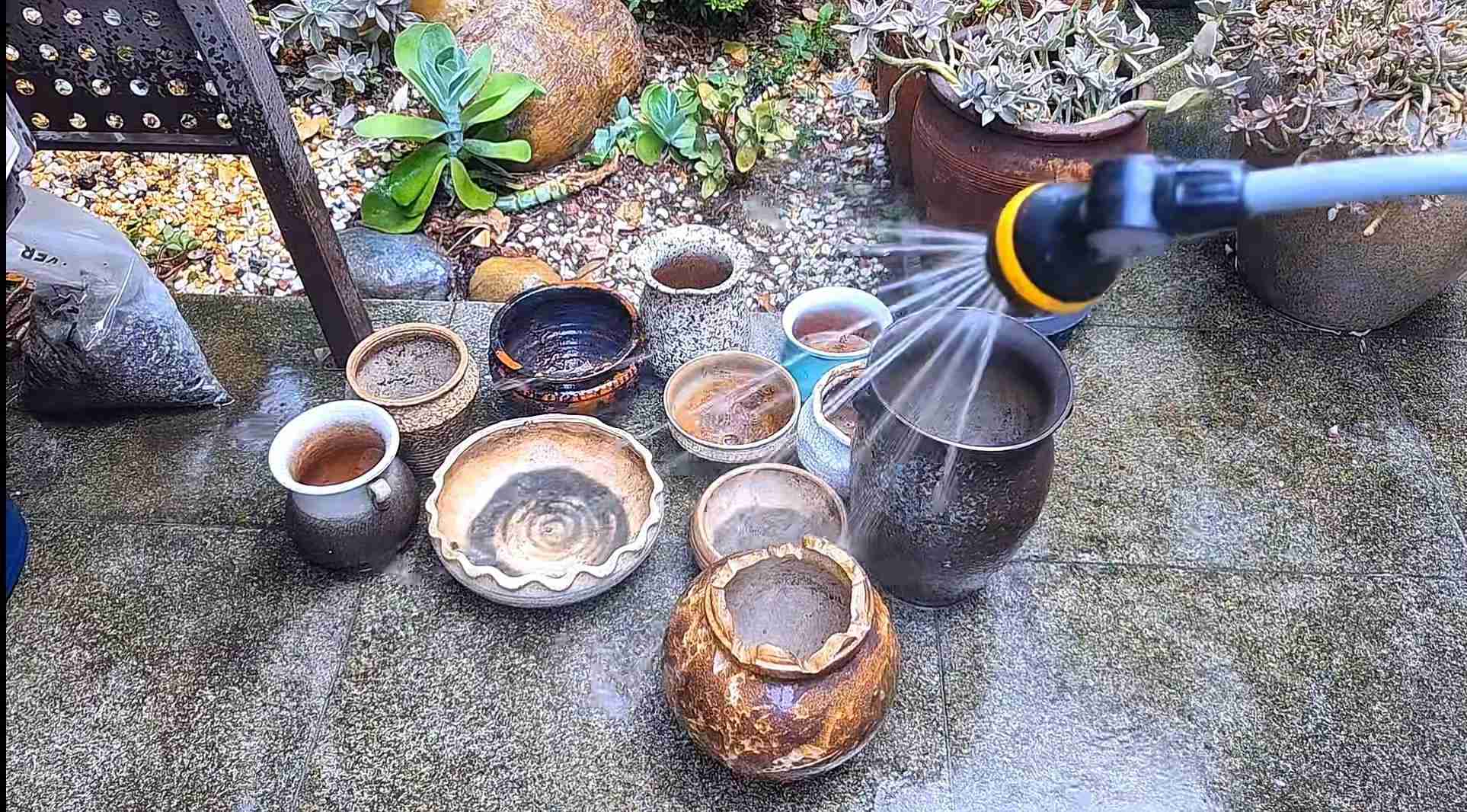
Materials and Tools Needed to Clean Terracotta Pots
- A soft-bristled brush or sponge
- Dish soap or mild detergent
- Baking soda (optional)
- Vinegar (optional)
- Water
- A large bucket or basin
- A towel or drying rack
Steps To Clean Terracotta Flower Pots
Removing old soil
First, turn the pot upside down and pat it gently to get as much excess soil off as possible. If there are any roots stuck in, use a small wooden stick or a garden knife or something like that to carefully pry the roots out of the soil. If the roots are stuck really tightly, use a little force to loosen them up, but be sure not to damage the pot.
Rinse with water
After removing the soil, rinse the pot thoroughly with water. This will help remove loose dirt and debris. If there are stubborn stains, use a sprinkler hose to rinse, making sure every corner is clean.
Soak in soapy water
Next, mix warm water with a small amount of dish soap and pour it into a large bucket or basin. Soak the terracotta flower pot in the soapy water for about 15-20 minutes. This will help loosen up long-term dirt and stains.
Scrub the flower pots
After soaking, use a soft-bristled brush or sponge to scrub the pot. Focus on the areas where there are dirt or mineral deposits. Don’t miss the inside of the pot, especially the drainage holes. Make sure to scrub them thoroughly to remove any remaining soil, roots, etc.
Dealing with stubborn mineral deposits
If your terracotta pots have white mineral deposits, also known as “salt bloom,” you can mix baking soda and some water into a paste, then apply the paste to the stain and scrub it with a brush. Alternatively, you can use white vinegar to clean it: pour a little vinegar on the stain and wait a few minutes before scrubbing.
Rinse and dry
After brushing, rinse the pot thoroughly with clean water to make sure there is no soap, baking soda or vinegar left on the terracotta flower pots. This is important because if the cleaning agent is not rinsed away, it will affect the growth of the plant.
After rinsing, place the pot in a well-ventilated place to dry naturally. Terracotta absorbs water very well, so it will take some time to dry. You can place the pot in a warm and dry place, or hang it on a drying rack.
Tips for Caring for Terracotta Flower Pots
Avoid overwatering: Clay pots are porous and tend to absorb water, which can lead to the accumulation of mineral deposits. Be careful to control the amount of water you give.
Use pot liners: If your pots are for indoor use, consider using plastic liners to reduce mineral deposits and external moisture.
Clean regularly: Cleaning your pots every few months can prevent dirt and mold from accumulating.
Conclusion
Cleaning terracotta flower pots is a simple yet effective task that can significantly improve your plants’ growing environment and the appearance of your pots. By removing old soil, dealing with mineral deposits, and disinfecting regularly, you can ensure healthy plant root growth. With a little patience, your clay pots will continue to bring beauty and vitality to your gardening.
Happy gardening!

